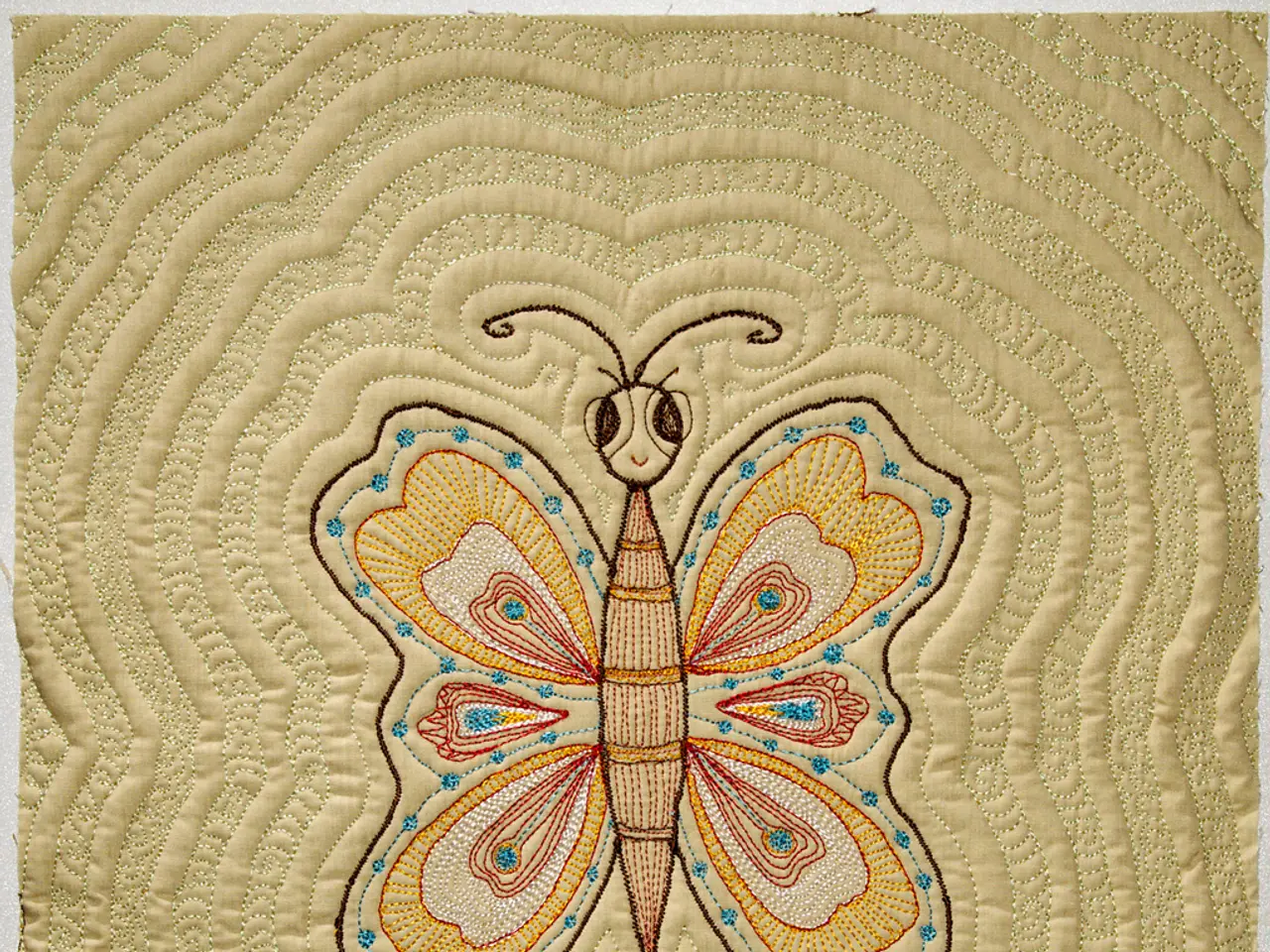Techniques for Intricate Embroidery Fonts: Consistently Produce Breathtaking Outcomes
Mastering Small Embroidery Fonts: A Comprehensive Guide
Embroidery, a craft that blends artistry with precision, can be a rewarding hobby. One of the challenges in embroidery is working with small fonts, but with the right techniques and tools, you can achieve stunning results. This guide will walk you through the essential steps to create successful small embroidery projects.
Choosing the Right Font
The first step in creating small embroidery is selecting the font. Opt for embroidery fonts designed for small sizes with clear, simple shapes. Such fonts ensure legibility at small sizes, typically ranging from 0.25" to 2” height. Monospaced or block-style fonts are preferable over overly intricate or script fonts, which may not stitch well in small formats. Many digital embroidery font packs offer sizes explicitly tested for small-scale embroidery projects.
Optimizing Techniques and Software Settings
To optimize the results with techniques and software settings, consider the following tips:
- Digitization Tips: Start with clear, high-contrast artwork or font outlines. Simplify designs to reduce colors and use vector formats where possible for crisp edges.
- Stitch Types: Use satin stitches for lettering edges and run stitches for fine detail; avoid dense fills in small fonts which can cause thread bunching.
- Adjust Stitch Density and Length: Set stitch density appropriate to fabric and thread to prevent puckering. Use software features like pull compensation to counteract fabric distortion during stitching.
- Software Editing: Modern embroidery machines and software allow you to preview, resize, rotate, and sequence letters easily. Upload custom fonts in formats like .PES or .JEF and preview designs on-screen to ensure correct placement and size before stitching.
Popular software like Embrilliance or Bernina’s software supports these optimizations along with font bundles tailored for embroidery in multiple sizes to test before buying.
Experimenting with Spacing Techniques
Embroidery software offers settings that can be adjusted to optimize small fonts. Experiment with different spacing techniques to find the right balance for your chosen font. Adequate letter spacing is crucial to prevent letters from merging or appearing illegible, ensuring clarity and readability.
Choosing High-Quality Threads and Fabrics
Choose high-quality threads in colours that complement your design. Different fabrics react differently to embroidery; understanding their characteristics is essential for successful projects. Thicker threads may enhance visibility, but ensure they suit the intricacies of small fonts.
Regular Maintenance and Troubleshooting
Regular maintenance of your embroidery machine and tools is crucial for consistent performance. Regularly replace the needle to prevent issues like thread breaks and distortion in small font embroidery. Clean the machine, oil moving parts, and check tension regularly to avoid glitches that may affect small font embroidery. Troubleshooting common issues like thread tension problems and misalignment is essential for a smooth embroidery process.
Preparing for Your Project
Before diving into your main project, conduct test runs and samples. Proper hooping prevents fabric slippage and ensures accurate stitching. Take the time to position and secure your fabric meticulously for optimal results. Accurate placement of small fonts is crucial for a polished look; use marking tools to center and align designs before embroidery.
The Importance of Monogramming
Monogramming adds a personal touch to small font embroidery; experiment with different monogram styles and techniques. Choose fonts specifically designed for embroidery for clarity and readability. Factors such as font style, thickness, and complexity play a role in selecting the right font.
Backing Materials and Support
Backing materials provide additional support to fabrics in embroidery projects, enhancing stability and preventing distortion. The spacing between letters is pivotal in small font embroidery.
In conclusion, mastering small embroidery fonts requires careful consideration and application of various techniques. With the right font selection, digitization, stitch types, and software settings, you can create stunning, legible, and durable small embroidery projects.
- For a successful lifestyle project, consider exploring fashion-and-beauty articles on mastering small embroidery fonts and their application in monogramming.
- To enhance home-and-garden elements, you might benefit from education-and-self-development resources that offer tutorials on digitizing and stitching small embroidery fonts for DIY hoop art or embroidered patterns on throw pillows.




